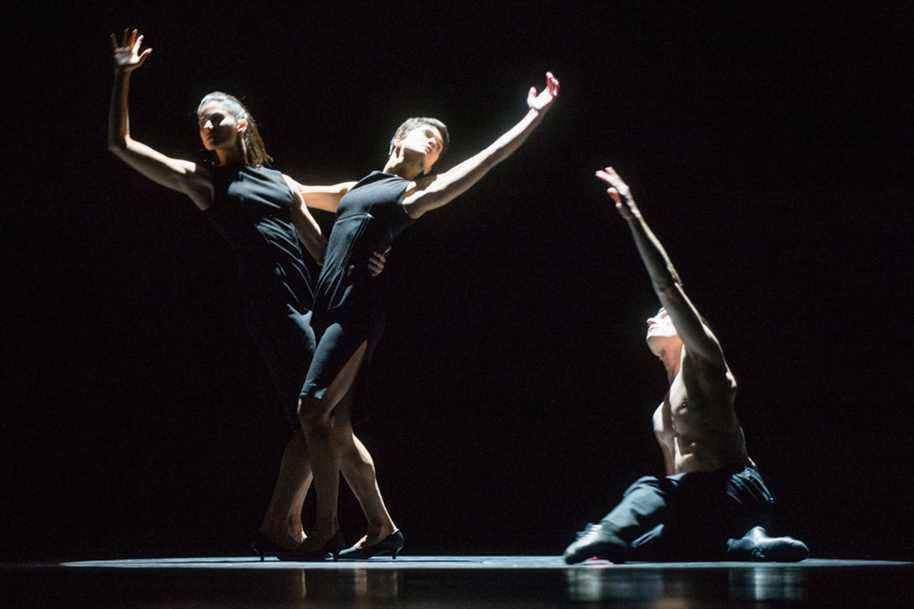It is by inviting the shadow into his works that Édouard Lock allows the spectator to open a breach to insert himself there, initiating this relationship between the stage and the public. After a pandemic hiatus, the renowned choreographer resumes the conversation with his new creation for the São Paulo Companhia de Dança, Trick Cell Play.
Posted at 7:01 p.m.
After The Seasonspresented in Montreal in 2016, Édouard Lock is once again collaborating with the Brazilian company São Paulo Companhia de Dança – “a company that I adore and which takes risks”, he explains on the phone – to propose Trick Cell Playa piece for 14 dancers carried by the music of the composer Gavin Bryars, a longtime accomplice of the choreographer.
In The SeasonsBryars revisited – by deconstructing them – the Four Seasons by Vivaldi. This time it was the opera’s best-known arias that served as material and inspiration for the composer. Which ? Lock prefers to keep the mystery and leave it to the public to recognize these deconstructed tunes for instruments.
In this new offering, whose coming to Montreal has already been postponed twice and finally presented this Wednesday as part of a triple program, Édouard Lock creates a “smoking room environment”, bathed in his signature contrasting chiaroscuros. “The lighting repositions the dancers in a camera, a dark white,” he says.
Shade, for Lock, goes far beyond an aesthetic choice. It’s a space he gives the viewer to enter the work, he explains.
“When I was a child, my father drew a lot, and then he added shadows. I asked him why he ruined his drawings and he replied: “No, I don’t ruin; the most essential thing is the shadows.” I understood later that when an audience looks at a presentation, it is in the dark parts that it can interfere, where it can recognize itself in what it observes. »

PHOTO CATHERINE LEFEBVRE, SPECIAL COLLABORATION
The choreography Édouard Lock.
The audience influences what happens on stage, and this relationship is conservation. A social, intimate and anonymous conversation between two groups of strangers. This is another form of discussion.
Edouard Lock
For the creator, this conversation, momentarily lost during the pandemic, is essential – whatever some say – in a society. “Theatre plays an important role. It is a hub where people can come together and connect around topics they share. For me, it is essential for the health of a society, health which is also created in all the undefined and cultural exchanges which form societies. »
Fuzzy body, abstract body

PHOTO CATHERINE LEFEBVRE, SPECIAL COLLABORATION
For Édouard Lock, the body is a fundamentally vague identity.
The founder of La La La Human Steps is a talented choreographer with an international reputation; he is also an artist who takes a unique look at the world around him. And it is this idea of a world, and a body, which go beyond the limits in which we want to confine them, abstract and mysterious, that he has been inviting on stage in his creations since his debut in 1980.
“We think the body is known and understood – a certain age, aesthetics, grandeur. But if I ask you how many lines you have on the left palm of your hand, will you know the answer? The body is a carrier of mystery, it is not defined, and even less in a context of movement. The mind is seen as complex, and the body as relatively simple, but this is not true. Imagining the body like this gives much more freedom. For me, the body is an entity that is fundamentally blurred. Dance, that’s it! »
Lock is recognized for his ultra-rapid gestures, where the limbs – particularly the upper body – move at such speed that it becomes difficult for the viewer to trace their outlines, all exacerbated by the play of shadows and of lights. “The body is as complex as a thought, and in motion, as abstract as a thought. I am told: your dances are very fast. Yes, it’s a way of hiding the detail, it becomes more difficult to understand. To me, it looks a little more like the real thing. »
By creating this “interference”, it allows the body to embrace its first nature. A nature which is not dictated by anything and which does not exist to be observed. “Nature is filled with details that are not there for the observer, details that will never be seen. The world is not made to be observed: we observe the world. To create a dance full of details, but many of which will never be seen, is something that sticks a little better to the reality of the world. »
Thus, the function of the artist, he believes, lies there. “There is always a disagreement, in theory, between what is presented on stage and what is off stage. And that too is essential, to continue the conversation.
A discussion that the choreographer found himself pursuing, during the pandemic, using his words, while working on a script project. “It’s strange to say, but words and dance aren’t that far off. What creates the beauty of a language is not the meaning of the words, but their arrangement, the rhythm, the appetizer. The way to define a choreography is a bit the same thing; a structure which is beautiful by the arrangement of the movements, the rhythm, the display. »
The triple program comprising Trick Cell Play ofEdouard Lock, Fire Bird by Marco Goecke and Agora by Cassi Abranches is presented until April 9, at the Théâtre Maisonneuve.

